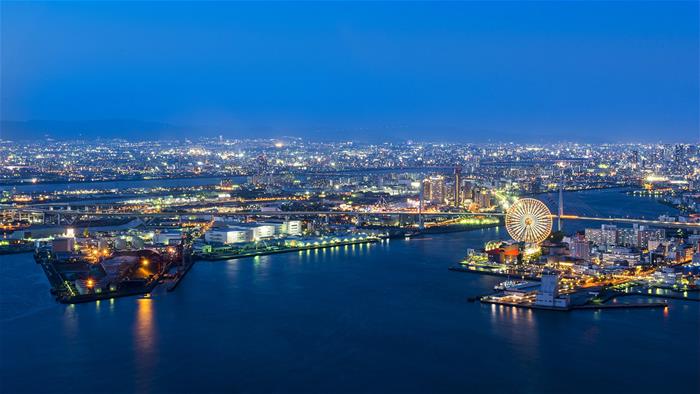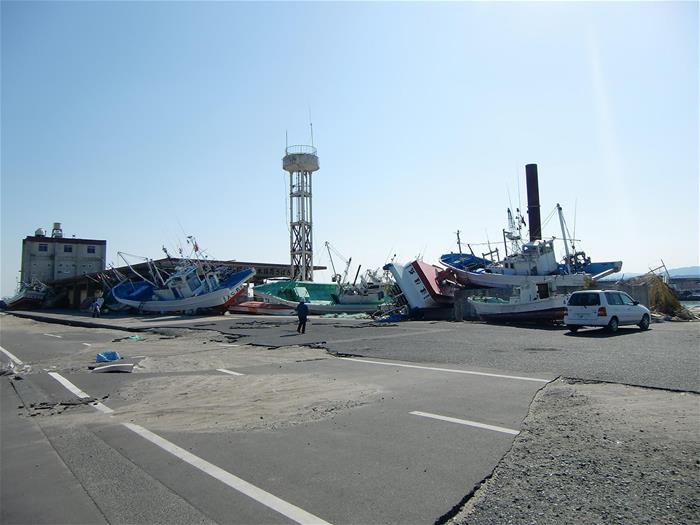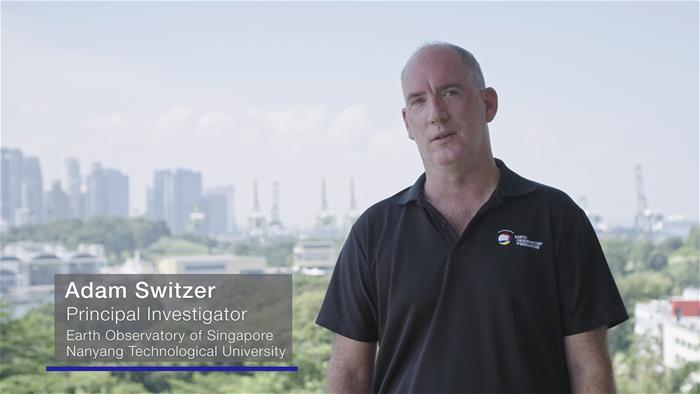In this blog series, scientists from the Earth Observatory of Singapore (EOS) explore key themes of the documentary series Changing Ocean Asia. In this post, Associate Professor Adam Switzer looks at extreme weather events and how we can protect our ports in the 'Extreme Weather. Powerful Tsunamis' episode of the docu-series. Watch the episode here.
Around 70 per cent of Southeast Asia’s population lives along the coast. The region is also home to the world’s busiest ports, with about 80 per cent of global shipments passing through the region’s ports at some point of their journey to markets. But these ports are vulnerable to the effects of our warming oceans and rising sea levels and this, in turn, threatens the region’s vital role in global trade.

The port of Osaka is one of the five major ports in Japan (Source: mkitina4/Pixabay)
Large and destructive tsunamis are relatively rare, but recent events such as the 2011 tsunami in Japan have highlighted the vulnerability of port structures to these high-impact, infrequent extreme events. The tsunami affected the major ports in the region and impacted global trade, resulting in more than US$12 billion worth of damage to ports and infrastructure. It crippled supply chains and critically impacted the imports and exports in the region by around 60 per cent.
Disruption to port functions can have cascading impacts on the local economy, global transportation, and the global supply chain. Climate change will further compound these impacts, as sea-level rise will amplify coastal flooding by moving the baseline on which sea level extremes occur. How can we protect ports to ensure they are safe and sustainable for our future society?
We studied the impacts of the 2011 tsunami in Japan to assess the effect of tsunamis on global trade and coastal infrastructures such as ports and oil facilities.

Damage to Ōtsu-port in Kitaibaraki city, Ibaraki prefecture, Japan by the 2011 Tohoku earthquake and tsunami. Many ships were washed ashore and destroyed by tsunami (Source: On-Chan/Wikimedia Commons)
By analysing hundreds of satellite images before and after the event, we characterised the vulnerability of the ports along the east coast of Japan and provided an assessment of the damage caused by the tsunami. Some of the damage we observed had not been recorded previously.
We gained insights into the tsunami behaviour on shore and into the resilience of building structures and materials used in ports. We looked at key categories such as construction materials, manufacturing, cargo handling facilities, food, chemical and petrochemicals.
Studying the ports in the Tohoku region provided us with quantifiable datasets on the vulnerability of the region to coastal hazards such as tsunamis, which is important since many vital facilities are located in port areas. For example, we identified that the oil refineries and petrochemical complexes that are commonly located at low elevations are vulnerable to multiple hazards. The 2011 tsunami strongly affected these facilities, causing breakage of fragile pipe systems, leakage of petrochemicals stored in warehouse sheds and fuel leakages that led to hazardous fires.

Associate Professor Adam Switzer's research on coastal hazards is crucial as we move towards safer and more sustainable coastal communities (Source: Screengrab from Changing Ocean Asia)
Our work underscores the critical need for risk assessments for port infrastructure from coastal hazards like extreme tsunamis and storm surges. These studies must also be combined with the impacts of a changing climate system that is causing sea-level rise in the region.
Securing economic trade stability in the region from events like powerful tsunamis or storm surges from cyclones is critical to global trade. The true vulnerability of our everyday lives is yet to be fully understood, but our work aims to address such vulnerabilities and pave the way towards safer and more sustainable coastal areas.
The new documentary series Changing Ocean Asia explores four key themes around the impacts of the changing ocean. Narrated by Dr Sylvia Earle, the documentary also looks at the challenges and solutions that are being explored by scientists at the Earth Observatory of Singapore as well as governments and businesses.
The series can be viewed from any web browser or wifi-enabled device that offers the Curiosity Stream application or on any one of their partner platforms including StarHub TV Channel 422 in Singapore, Amazon Prime, Apple TV, and other partners globally.